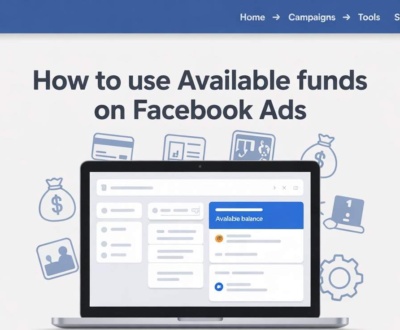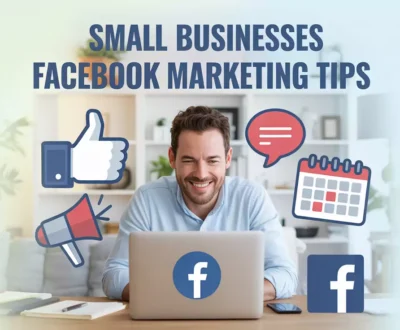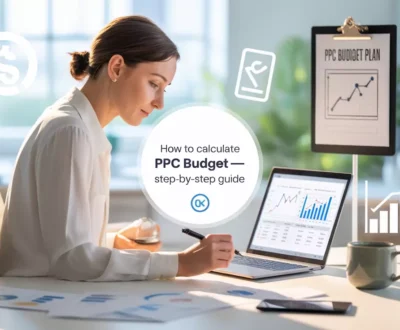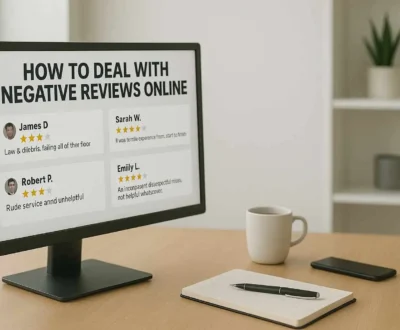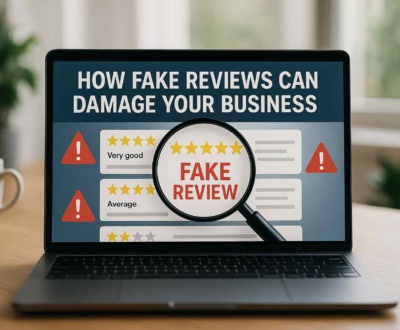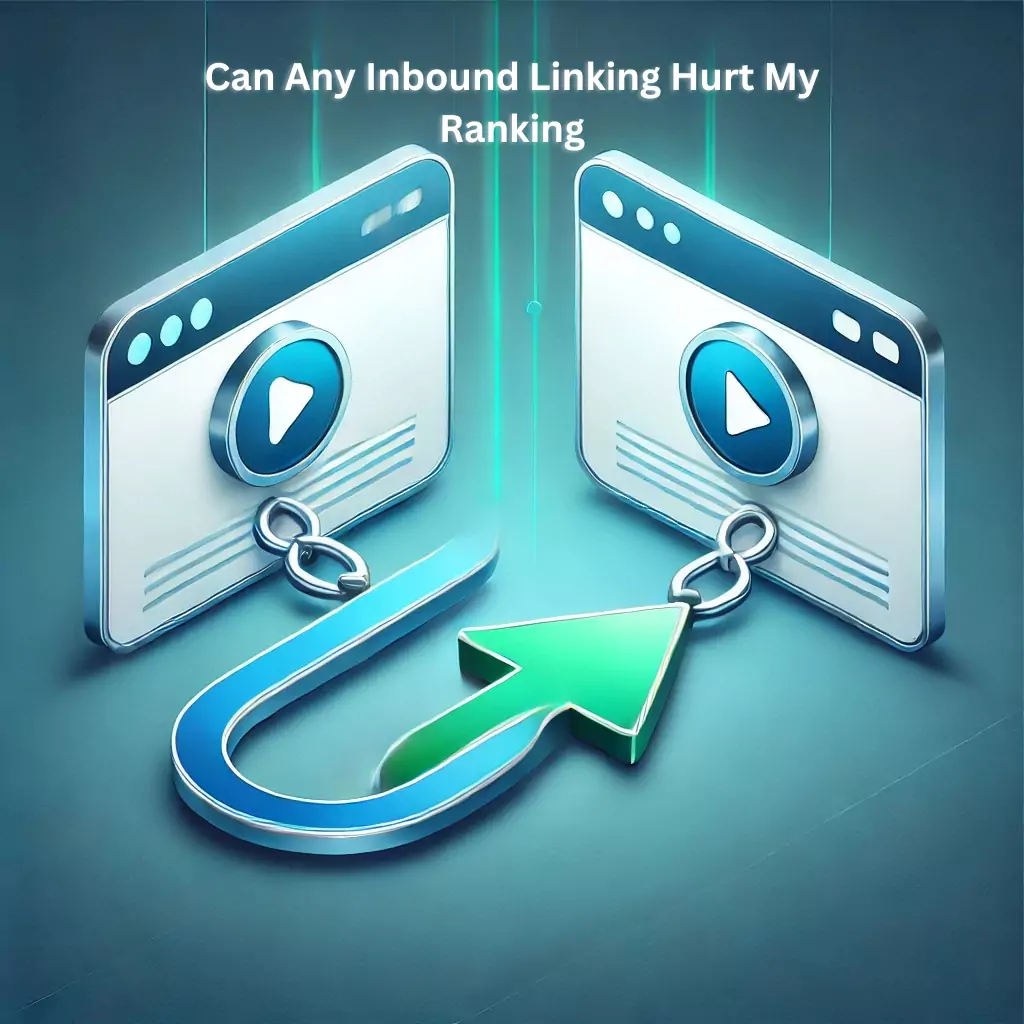
Link building is perhaps the most important method for improving a business’s SEO and ensuring that it is a top performer in search results. In the end, a significant relationship exists between a site’s ranking in the search engines and the number of backlinks.
Backlinks are the web-based version of social evidence. The more backlinks your website has, the more reliable it appears to be among the people who visit it, and the more trustworthy you appear within Google’s search ranking algorithm.
Are you skeptical?
As per Andrey Lipattsev, a senior executive at Google, Link building is one of the three main SEO factors that determine search rankings. In terms of linking, it is important to understand that SEO and link building are inextricably linked.
However, can link building affect your SEO? Unfortunately, yes.
Google is extremely strict with its guidelines on link spam. Certain link-building errors could cause irreparable damage to your SEO, and in extreme circumstances even your site.
In this post, we’ll explore which links create your SEO, may also be the ones that ruin it. Read on.
The Basics of Link Building
Look. This article isn’t intended to cause fear among firms involved in link-building initiatives.
There is no doubt that the creation of backlinks can positively impact a website’s SEO. But, unwise link-building methods expose your site for negative search engine optimization and Google’s devastating penalty.
Before we get into the ins and outs of what we will be discussing today, let’s review the fundamentals.
What is Link Building, Again?
For those who require an immediate refresher.
Link construction involves getting backlinks on external websites, which lead to your site. These backlinks, also referred to as inbound hyperlinks, give users the ability to navigate between sites that are linked to the source.
Additionally, these hyperlinks move link juice from the source website to the linked website and influence the link’s “authority.”
Naturally, we’ve diluted the meaning of link building and backlinks as mentioned above. This is a few additional points marketers should be aware of:
- Link building is primarily focused on the inbound link: You’re particularly interested in links that direct to your site, but not links that you link on other websites.
- Link construction is a process that prioritizes quality over quantity. Not all links are made in the same way. In the SEO context, SEO quality, relevant, reliable links from reputable websites are more valuable than a huge number of poor-quality links.
- Link creating internal link building: Link development typically refers to acquiring external links towards your website. internal linking is essential for SEO, and navigation on websites is a different concept.
Why Does Link Building Matter?
In earlier posts we have brushed aside the importance of creating backlinks to aid in SEO. What are the particular benefits that await businesses that are actively involved in link-building initiatives?
Increased search engine ranking
Link building is among the foundations of search engine optimization. Google looks at the quantity and quality of links to a site as a sign of confidence.
The research shows that the first position in Google is home to 3.8x greater backlinks than subsequent spots, on average. This means that higher-quality backlinks result in better rankings in search engine results.
There’s only one problem that many marketers tend to place backlinks based on that fundamental standard, an indexing factor in search results. What they tend to overlook is that backlinks can also be an effect of content.
Without quality content, creating backlinks is nothing more than a naive wish. However, attempting to construct backlinks without having any quality content to justify their SEO can be harmful.
You can certainly buy backlinks from high-DA websites. Do you believe that Google will not notice authoritative websites that link to generic, thin and watered-down content-producing link farms? You should reconsider that.
In conjunction with SpamBrain, Google has doubled its spam link detection process with the help of AI.
Traffic to websites increased
In addition to a higher SERP rank, building backlinks is well-known to increase the site’s organic traffic. The increased number of visitors could be due to two distinct sources:
- SERP Traffic: Backlinko found that higher position on search results affects the volume of traffic a website receives. For instance, how many times do you swing through Google’s results on page 1 while searching for something? Exactly.
The position #1-3 receives the largest portion of the traffic, and the number decreases rapidly with each subsequent result.
- Referral traffic: Backlinks are additionally known to bring referral traffic when people click on the links that lead to your website. If external web pages link your site’s content and recommend your site to their viewers. Your brand is exposed to a new audience of potential customers and, hopefully, potential customers.
Enhanced domain authority
Domain authority (DA) is an imaginary score created by Moz to determine a website’s overall credibility based upon the backlinks profile of its website.
Domains with links that originate from websites with high authority tend to have a higher DA. Furthermore, the greater your domain’s authority, the more likely you will get a high rank for competitive keywords in search results and also draw quality backlinks.
In the SEO field, domain authority is related with “perceived” authority, or how users perceive the credibility of a website.
In the end, off-page SEO specialists frequently contact websites with high DA to discuss collaborative opportunities to build links for sales or exchanges of links.
In these situations, there is a thin line between the things Google permits and what Google punishes. In the event of being found guilty of the latter, it can not just harm your SEO as well as your website completely. We’ll discuss this in the future.
Since we’re on this issue, what are other ways that link building can harm SEO?
6 Ways Link Building Can Harm SEO
Since not all links are created equal and not all link-building methods are. Although Google offers a degree of leniency towards some link-building strategies, they also have strict penalties when users do not respect the kindness of Google.
Here are some ways that link building could hurt SEO on a site.
#1 Links that are sponsored
Paid or sponsored backlinks, also known as sponsored links, are a popular option for quick SEO boost– and with an excellent reason! We all know that SEO requires time. Since backlinks are a key index of search rankings, purchasing inbound links is more sensible than writing amazing 5,000-word pieces, isn’t it?
Yes, and no.
Yes, since Google recognizes the fact that buying and selling links is an essential part of the internet economy.
Yes, as Google permits the selling of links, the backlinks that are sponsored must be certified by the correct rel attribute.
In the alternative, Google may see the purchase of links as a manipulative technique to generate links, and we are aware of the way Google considers this.
If the backlinks you purchase from sponsored sources aren’t qualified properly, you are using them to increase the rank of your site.
In retaliation, Google may devalue the paid links, impacting your website’s performance. Additionally, if Google detects the presence of a pattern of backlinks that are not natural, the site could get in the way, which could result in a decline in both traffic and search results.
One could argue, ” I’ll just make sure that sponsored links are qualified with rel=’sponsored’ attribute to avoid Google’s penalty and still get that delicious linking juice?”
Sure, you can avoid penalties from Google but are you confident that you’ll still receive equity from the site linking to you? Let’s examine what Google considers sponsored links:
Google’s preference to use the rel=’sponsored’ attribute for paid links is likely to reflect their desire for more transparency in their link-building practices.
But, if we look at Google’s terms, we can see sponsored links and no-follow hyperlinks like two pieces of one pod.
While rel=’sponsored’ is now the current standard, webmasters can choose to use rel=’nofollow’ to identify paid links. Also, there’s little difference between these two options in terms of the amount of link juice.
In this case, if a no-follow link does not provide you with any credit for your links, expect that sponsored links will provide a small amount of rank. If I were you, I would question whether paying for links that have no SEO value is an inefficient use of your money.
In the context of No-follow Links…
#2 Backlinks that do not follow
Contrary to what some people believe, no-follow links themselves typically don’t harm the SEO of a website. They can provide indirect benefits for the page linked to.
For instance, links that have rel=’nofollow’ attributes protect websites from Google’s penalization. While no-follow links do not transfer link juice, but they can generate referral traffic, which results in increased brand recognition and valuable visitors.
There are specific instances where no-follow links can have negative SEO consequences.. Below are a few examples:
- Comments or negative reviews: Comments are user-generated content and usually contain a nofollow tag (if there isn’t the rel=’ugc’). While they don’t directly impact SEO in any way, these negative reviews or comments that have nofollow links could still harm your reputation as a brand.
- Paying for links that do not follow: Google allows linking domains to choose between rel=’sponsored or rel=’nofollow’ when it comes to paid links. If you were to pay for a dofollow backlink but the scammer did not comply, the no-follow backlink won’t hurt your SEO… however, it could certainly hurt your SEO budget (and pride! ).
The main point to be aware of is that no-follow links aren’t necessarily bad. Although they provide no link juice for the targeted link, but they can be excellent sources of referral traffic and aid in maintaining an appropriate link profile.
#3 Backlinks of low-quality
Google examines backlinks holistically. This means that they not only look at the quantity and quality of your backlinks. They also examine the quality of websites that link to you.
Websites with low-quality backlinks and poor content transmit bad signals for search engines. They could indicate that your website is not trustworthy and of poor quality. This means that your authority on the domain and SERP rank suffer.
However, Google doesn’t always stop with a quick slap across the shoulder. Because of their stance against manipulative link building practices, if they spot unnatural backlinks on low-quality websites, they could penalize you for it.
The penalties can range from a lower SERP ranking to de-indexing your website or even full-blown domain de-indexing.
Be aware that the worth of backlinks can be measured by the amount of link juice they transfer. Poor quality backlinks have little link juice to provide. In the worst case they could even diminish the worth of your excellent backlinks.
From the perspective of a consumer, the fact that you are linked to a website that has an unpopular reputation could create negative impressions, which can harm your brand image and put off prospective customers.
#4 Backlinks that are not from related sources
Backlinks from non-related sources could be referring to two different things: (1) inbound links from websites that have completely different niches, or (2) websites that discuss different subjects.
While they’re not necessarily dangerous in small amounts, a huge amount of backlinks that are not related to each other can adversely affect your SEO in several ways:
- Confusing relevance signals: Context and relevance are two of the parameters that search engines use to determine the quality of backlinks. Backlinks from websites relevant to your field inform Google the content you provide is relevant for the people who are reading it. However, irrelevant backlinks could produce mixed signals, which can cause engines to think you’re involved in link-building schemes.
- Lowered value of link juice: Unbeknownst to many, link juice isn’t just an effect of the domain authority of the website that is used to create it, as well as its relevance to the current market. When you establish backlinks on different sources, the site’s relevancy will also affect how much juice your website gets regardless of the linked website’s domain authority.
#5 Engagement in PBNs
According to Google’s link-spam policies, any site that aims to alter search engine results is considered to be link spam. However, the practice of engaging in spammy link building methods puts websites on Google’s undesirable list.
Private blog networks, also known as PBNs, are included in this category.
PBNs are web-based networks that are designed by someone (or are in charge of) specifically to link to the primary website and alter ranking on search engines.
Typically, PBNs are sites that are of low quality and have limited content, and are stuffed with hyperlinks that link to the main site. Although the domain that is targeted initially reaps the benefits, but the increase in poor-quality backlinks raises red flags for Google, which can lead to penalties.
What many people don’t know is that the reason why PBNs are problematic is the manipulation motive that is behind this network.
In another way, it is not necessary for an entity to “create” an entire set of websites to qualify as a PBN.
An SEO agency could be deemed PBN when they control multiple websites and randomly interlink them together to alter search rankings.
However, what constitutes PBN is very complicated. managing multiple websites that purposefully connect can be beneficial to SEO when done correctly. It could also be an effective approach if it can meet the following criteria:
- Websites serve a distinct goal: Each website has its distinctive content and users, and provides the user with value beyond just backlinks.
- Respecting the natural patterns of linking: Links and content between websites are both relevant and relevant, not keyword-stuffed efforts to increase positions.
- Content of high-quality: Each website focuses on creating informative and valuable content that draws organic traffic and encourages engagement.
#6 Link exchanges
Since the beginning of time, barter has been used to create connections and exchange cultures between different societies.
In the past, up to 20 years ago, Link exchanges were used by SEO experts to increase the SERP rankings of their websites.
In the present, Google categorizes excessive link exchanges as a type that is known as link-spam. Pay attention to the term “excessive.”
Link exchange, often referred to in the form of mutual links as well as traded hyperlinks, is when two websites exchange backlinks to increase SEO by exchanging website authority.
If “excessive” link construction is a problem, then Google has to have a specific minimum threshold for link exchange, that’s right?
Perhaps. Perhaps. Google knows.
Google’s policy on spam tells us that exaggerated link exchanges that are solely done to cross-link are harmful. How Google finds these malicious link exchanges goes beyond the scope of our job.
However, even though we do not have access to Google’s real ranking algorithm, we can conclude that link exchanges aren’t at all negative.
Link exchanges that are solely used to alter search rankings are a problem. However, natural link reciprocity between two websites is considered to be acceptable.
Pro advice: If you are determined to achieve success on the success of your SEO effort, I recommend avoiding anything that could trigger Google. Uncontrolled and indiscriminate link building could hurt your SEO and you may not even know it.
Beware the Wrath of Google
In the SEO market, Google is the overlord and all websites are humble subordinates. We are here to adhere to the rules of Google to avoid its fury and soak in the riches of remaining within the Google index kingdom.
In all honesty, Google’s penalties are an element to be considered. And the days are over for sites that engage in black-hat backlinking strategies.
While certain penalties are more lenient, such as SERP ranking devaluation, some instances could force Google to issue more severe punishments, like de-indexing a website or page.
Webmasters as well as agencies, companies, and other organizations must be more cautious of the practices they employ to build links.
Armed with the right tools to protect your website from harmful backlinks and, in the end, avoid being disqualified by Google.
The Most Important Tools To Guard Websites against Backlink Disaster
Here are a few tools to help safeguard your site from harmful links that could harm your SEO
Linkody
Linkody is a one-stop backlink monitoring software designed to provide users with a complete look at their website’s backlink profile. Similar to Google, it is outfitted with Web crawlers which reveal every link available, as well as the following information:
- The URL of the linked page
- The anchor text that is used
- The rel attributes of backlinks
- Moz DA score
- Spam score
- Site’s position in the rankings
This lets you control all your backlinks from one location. Linkody is also a tool to disavow to cut your website’s connection from backlinks that are not good.
Without a tool for monitoring backlinks, it is possible to be astonished when your competitors launch SEO attacks on your domain.
For instance, they could increase the number of negative backlinks to your site. Linkody will be able to identify these problems for you, so you can take the correct, data-driven decision!
IndexCheckr
IndexCheckr, as the name implies, is a tool which lets you determine the status of indexing of pages and websites.
However, its use goes beyond knowing whether an URL is listed within Google’s index. It also helps you control your backlinks and stop penalties from occurring.
Since pages that are not indexed are inaccessible for search engines, any backlinks to those pages do not have any link juice and can be a threat to the backlinks profile of your. In extreme instances, the unindexed backlinks could cause Google to enforce its spam policy, which could result in a penalty.
IndexCheckr allows users to actively find backlinks that aren’t indexed and then take action to fix these. It is equipped with automated alerts, you’ll be aware of any potential issues and take action when previously indexed backlinks are removed.
Backlinks Only Hurt When Left Unmanaged
I’ll return to the information I provided in the first paragraph of this piece.
Backlinks are important and will remain an important ranking factor in the foreseeable future.
But, there will be instances when backlinks can cause more harm than good for SEO. In the majority of cases, this is the result of our negligence and mismanagement.
However, with the right knowledge and the right tools that we have at our disposal, we can withstand the storm, before it turns to a larger disaster.
Happy linking (and Please, be extra cautious! ).
About us and this blog
We are a digital marketing company with a focus on helping our customers achieve great results across several key areas.
Request a free quote
We offer professional SEO services that help websites increase their organic search score drastically in order to compete for the highest rankings even when it comes to highly competitive keywords.


